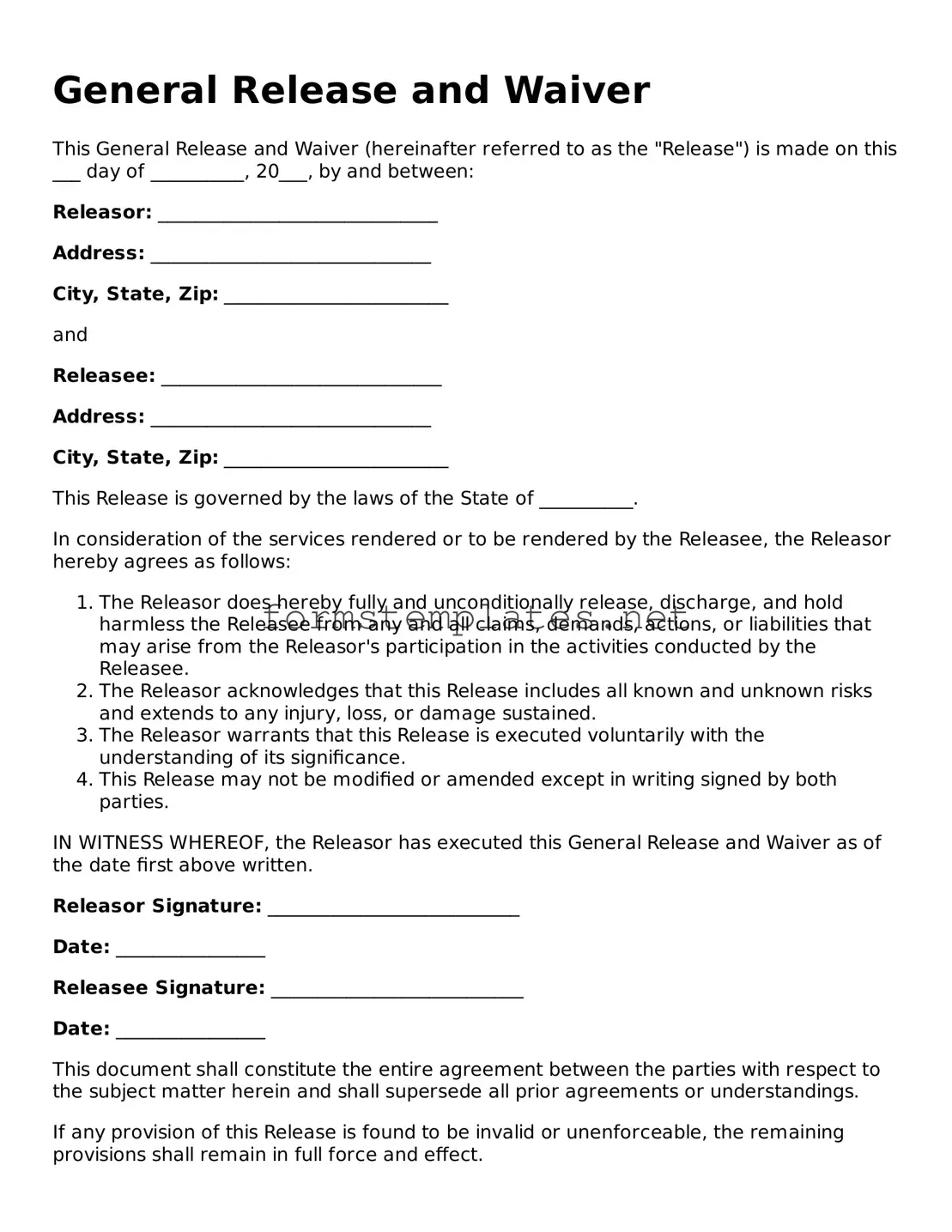General Release and Waiver
This General Release and Waiver (hereinafter referred to as the "Release") is made on this ___ day of __________, 20___, by and between:
Releasor: ______________________________
Address: ______________________________
City, State, Zip: ________________________
and
Releasee: ______________________________
Address: ______________________________
City, State, Zip: ________________________
This Release is governed by the laws of the State of __________.
In consideration of the services rendered or to be rendered by the Releasee, the Releasor hereby agrees as follows:
- The Releasor does hereby fully and unconditionally release, discharge, and hold harmless the Releasee from any and all claims, demands, actions, or liabilities that may arise from the Releasor's participation in the activities conducted by the Releasee.
- The Releasor acknowledges that this Release includes all known and unknown risks and extends to any injury, loss, or damage sustained.
- The Releasor warrants that this Release is executed voluntarily with the understanding of its significance.
- This Release may not be modified or amended except in writing signed by both parties.
IN WITNESS WHEREOF, the Releasor has executed this General Release and Waiver as of the date first above written.
Releasor Signature: ___________________________
Date: ________________
Releasee Signature: ___________________________
Date: ________________
This document shall constitute the entire agreement between the parties with respect to the subject matter herein and shall supersede all prior agreements or understandings.
If any provision of this Release is found to be invalid or unenforceable, the remaining provisions shall remain in full force and effect.
The Releasor hereby certifies that they are at least eighteen (18) years of age and have the capacity to enter into this Release.
